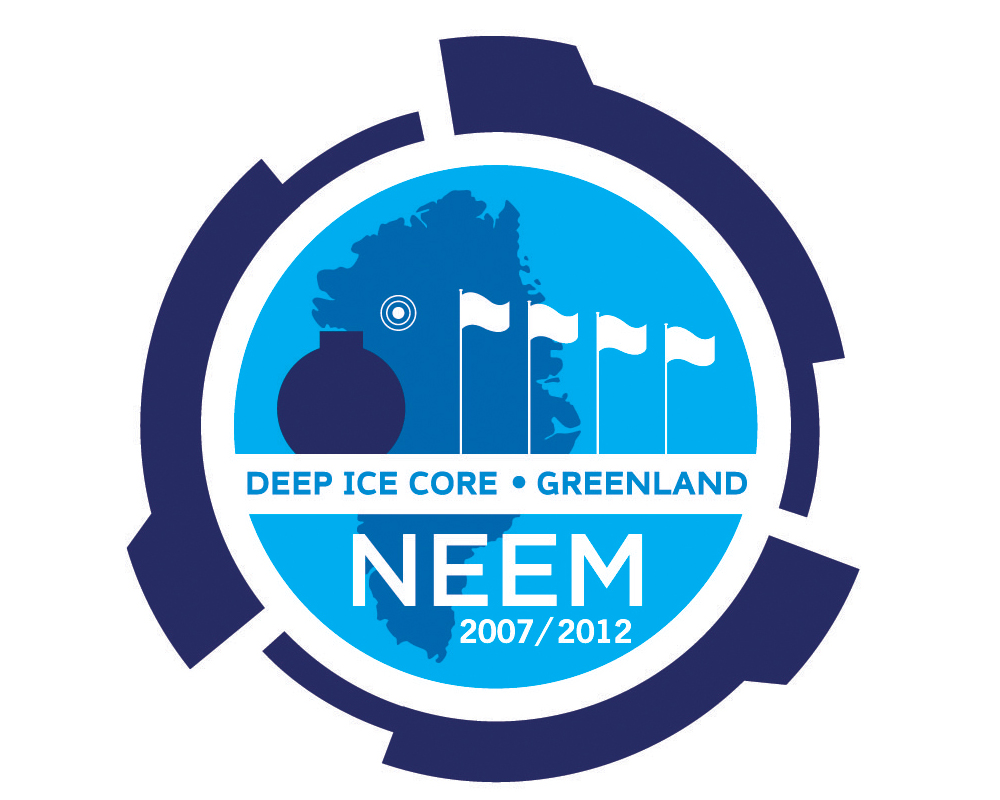
THE NEEM (NORTH EEMIAN) PROJECT is a new, 3km long, deep ice core in northern Greenland. This ice core will help us understand past environments and climates, and by improving that understanding, better enable us to predict the conditions of future climates. Specific goals include obtaining a record of the climate of last interglacial period, called the Eemian, in Greenland. This period was several degrees C warmer than today, and is our best analog for a potentially warmer future climate. This core and the attendant radar mapping will also provide constraints on the size of the Greenland ice sheet at that time, when sea level was many meters higher than today. Greenland ice contributed significantly to that higher sea level, as it may also contribute to higher sea level in the coming centuries. This core will also provide additional records of abrupt climate change, a common occurrence in the North Atlantic region in times of large, continental ice sheets, but one that has also occurred in the current warm period. The NEEM core should reveal if abrupt climate change occurred in the warmer Eemian period. It will also add to the understanding of the geographic extent and timing of past abrupt climate changes observed in other Greenland ice cores. From such information will hopefully come better predictive power for future abrupt climate shifts. This core will also add to the growing store of knowledge about how alterations of climate and the environment by humans fit within the context of natural climate change. NEEM is an international effort, led by the glaciology group at the University of Copenhagen. Fifteen countries have expressed a desire to participate. The US team currently consists of scientists from The University of Colorado and The University of Kansas. Scientists from these institutions are responsible for core collection and radar surveys. In the coming years, we hope to add scientists from CRREL/Dartmouth, Oregon State University, the Desert Research Institute, Pennsylvania State University, The University of California at San Diego, and the US Geological Survey. This US group will have central roles in all of the main scientific goals of NEEM.
NEEM will provide opportunities for international teams of teachers and students to work along side an international group of scientists on the ice in structured educational activities. It will provide material for polar science courses for college undergraduates and graduate students. It will provide opportunities for undergraduates to experience ice core research, and for graduate students to work in other countries around the world. And it will provide scientific findings that will be used by professional media outreach groups to publicize the importance of polar research, the International Polar Year, and deep ice cores. Finally, the data and interpretations generated by this project will address questions about the nature of climate and climate change that are of both direct and immediate scientific interest, and direct and immediate policy interest.
This project is a genuine collaboration between nations in the spirit of the International Polar Year: it is an important endeavor that no single nation acting alone could achieve. This research addresses ICSU IPY Framework Report Theme 2, to quantify and understand past and present natural environmental change in the polar regions. It contributes to Theme 3, advancing the understanding of the links and interactions between the polar regions. This project addresses the recommendations articulated in National Research Council’s “Vision for the International Polar Year 2007-8” to provide an assessment of polar environmental change through studies of the past environment, to create datasets for future investigations, to conduct investigations contributing to the prediction and consequences of rapid change, to excite and engage the public, and to develop the next generation of scientists. This project is an initiative of the new International Partnerships in Ice Core Sciences, and a key part of the ICSU-WMO approved IPY activity: “The Greenland Ice Sheet – Stability, History, and Evolution”.
